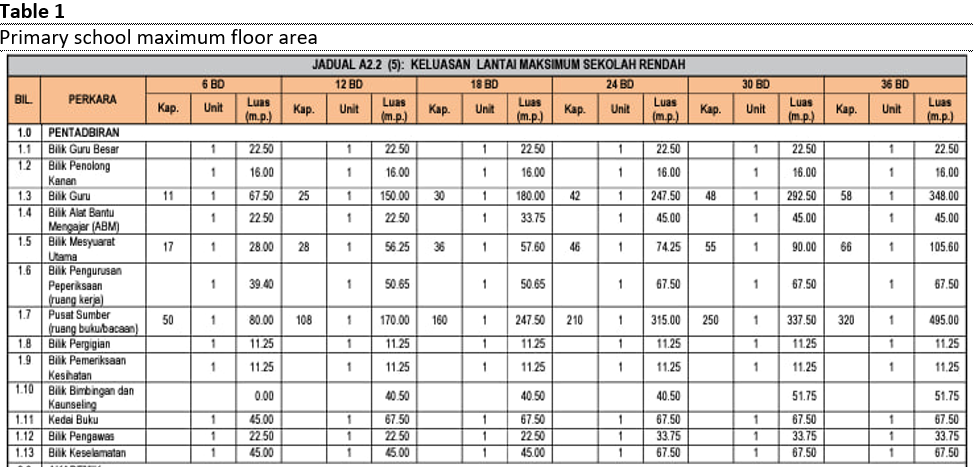Standard Classroom Capacity: Effective of Learning Activities in Malaysian Primary School Buildings
DOI:
https://doi.org/10.37934/ard.118.1.3441Keywords:
Classroom, standard compliance, guideline, capacity, school buildingAbstract
The teaching and learning process needs to be carried out formally in the classroom, which is the main learning space in the school system. This should be implemented effectively to achieve a level of comfort for students. The capacity of a classroom can affect the way the teacher teaches and the level of student understanding. Classroom capacity needs to be emphasized to encourage and maintain student motivation for continuous learning, especially at the primary school level. This study aims to analyse classroom capacity in order to improve student comfort in the primary school building and thus enhance the effectiveness of learning. The qualitative method used for conducting the study is the method used in this research to measure the predicted findings. The present area of 15 randomly chosen classrooms was measured (Width X Length) using a qualitative method that also included semi-structured interviews. The findings of the study show that 50 percent of classroom capacity in primary school buildings comply with existing guidelines, established design rules and classroom area requirements. The current classroom size is 2.25 m2 per student with a significant increase in student satisfaction during the teaching and learning process. However, the findings from the semi-structured interviews highlight interesting points in relation to the appropriateness of classroom capacity. Teachers think that classroom capacity affects students' level of comfort. Respondents agreed that the capacity of a classroom is effective with a maximum of 26 students. This research paper emphasizes the importance of compliance with classroom physical performance standards in primary school buildings to increase the comfort level of students in the classroom. The research presented here provides current information, knowledge, and findings regarding actual classroom capacity in primary school buildings data that could have an impact on students' comfort. During the formative learning phase, very little meaningful attention is paid to the areas where students spend the majority of their weekdays. As a result, this can support experts in the fields of school building management, building facilities, and other related fields in determining and implementing the right classroom capacity in schools generally.
Downloads























